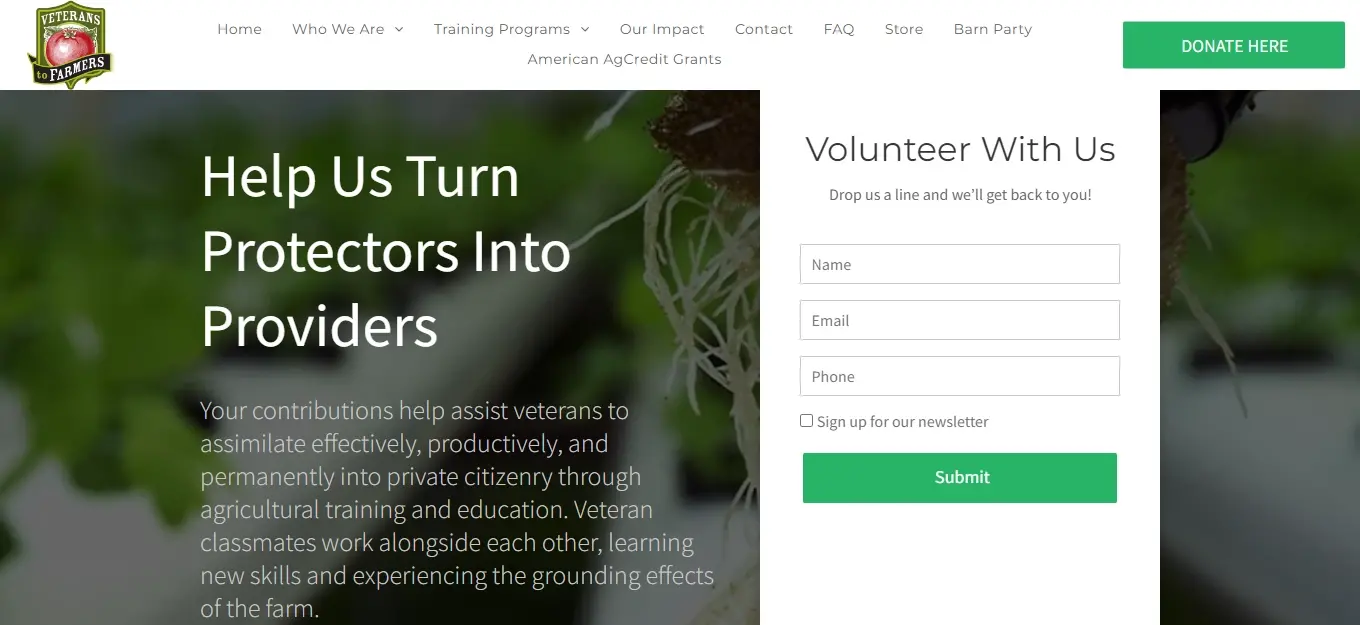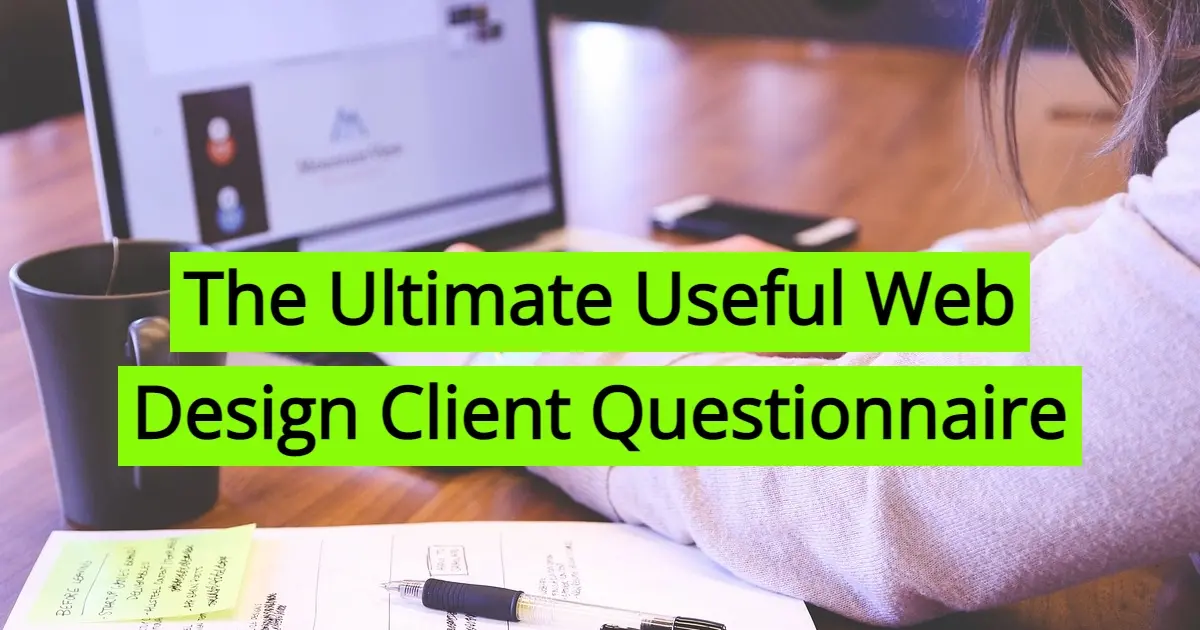Whether you’re a beginner as a freelancer or an experienced web designer, knowing what the client needs for the project is vital in order to deliver a solid working website. If you fail to ask the right questions, then you might be missing out on the important parts that the client needs in order to attract their target audience to subscribing, buying, calling, filling out forms, sharing content, or reading parts of the website. When this happens, you as the web designer have delivered a useless and broken website. Let’s prevent that from happening with this web design client questionnaire!
The Significance of Understanding Your Client in Web Design Projects
A key element of any successful business strategy has been Web design and development. Your primary goal in being web developers is to build websites that are perfectly functional but which also comply with the client's objectives and appeal to their target audience. It's essential that you understand your customers in depth to be able to do this. Here’s a few areas to take a look at when it comes to the importance of understanding your client as part of a web development project and how this might be able to deliver better results.
- Tailoring the Website to Meet Client Objectives
- Enhancing User Experience
- Effective Communication and Collaboration
- Managing Expectations and Mitigating Risks
- Delivering Personalized Solutions
Tailoring the Website to Meet Client Objectives
Each business has its own specific goals and objectives. Analyzing your customer's vision, mission and business strategy with a focus on understanding them will give you invaluable insight. You'll be able to build a website based on your knowledge, which allows you to effectively display their products, services and ideas. You'll be creating a strong tool to support their business strategy through the alignment of web design, structure and functionality with client objectives.
Enhancing User Experience
A successful website is one that ensures a smooth and pleasant user experience. Understanding the client's target audience is crucial in order to achieve this. You can build a website that is appropriate to the users you are going to target, if you understand their demographic, preferences and behavior. The knowledge of their expectations and needs allows you to develop intuitive navigation, engaging content as well as interactive features which will increase user satisfaction and conversion rates.
Effective Communication and Collaboration
The process for creating websites is a collaborative one, involving constant communication and feedback from the client to you. Knowing your customer helps facilitate effective communication by allowing you to speak their language. You can bridge the gap and build a stronger relationship if you understand their industry specific terminology, challenges or expectations. Better collaboration, which will lead to improved project management, timely delivery and reduced revision is a result of this mutual understanding.
Managing Expectations and Mitigating Risks
In order to manage expectations and reduce risk, clear communication is essential. You can get practical timelines, deliverables and budgets by understanding your client's objectives and limitations. This understanding will enable you to tackle possible problems efficiently and make accurate estimates. In addition, you will be able to design proactive strategies for overcoming potential obstacles and bottlenecks at an early stage with a view to reducing delays in project execution as well as improving client satisfaction.
Delivering Personalized Solutions
A one size fits all approach is rarely effective in today's competitive digital environment. You can deliver specific solutions tailored to the needs of your client when you understand them. You could build a website that makes them stand out from their competitors, taking into account their brand identity, location in the market and unique selling points. This personalization is not only enhancing the user experience, but also reinforcing the client's brand image, strengthening customer loyalty and trust.
The Ultimate Example of a Web Design Client Questionnaire
Now that you have a solid understanding why your client’s needs are very significant for the success of a web design project, you should put together a list of questions to ask them at the beginning of the project. This is usually called the discovery phase. Below are some of the essential questions you should be asking clients in order to get an understanding of who they are, and their project needs.
- What is your company about?
- What services or products do you offer?
- Is there anything that makes your company different from others in the same industry?
- Who are your clients?
- What are pain points that your services or products solve for your clients?
- Do you have an existing website?
- Do you know what keywords your website visitors use in order to find your website?
- What do you like about your website?
- What are some of the reasons you need a new website (if you have an existing site)?
- Are there any specific design features you want for your website?
- Are there any websites out there of interest that you like and wish to have similar design features?
- Do you need someone to create content for your new website?
- Do you have any established brand assets that will be needed for the new website, or do you wish to rebrand your company?
- Are you staying on the same URL or moving?
- Are you needing web hosting for your company website?
- When would you need the website to be done by?
- Do you have a web design budget?
- Once the web design project is done, will you need training?
- Once the web design project is done, would you need someone to handle ongoing website maintenance to keep it up-to-date and secure?
- Once the web design project is done, will you need ongoing content marketing?
1. What is your company about?
You need to know who you are working with and what they are about. You need to know their mission and even passions.

For example, Veterans to Farmers is a non-profit organization passionate about helping veterans of the armed services in the United States become successful at farming. Their mission is clear and on their website, they offer a lot of training, as well as offer ways for others to help give back or donate.
2. What services or products do you offer?
You must make sure to ask your client about what products or services they offer, or if they offer both. That’s one of the biggest parts, otherwise you won’t be able to put together a design with calls to action that indicates to the visitor what to do on the site, which would be to buy those products or services, or at least make an inquiry.
3. Is there anything that makes your company different from others in the same industry?
Some companies have prided themselves on building and selling unique products that may not be found anywhere else. They might offer luxury items that may be unattainable by the mainstream consumer.
4. Who are your clients?
Your target clients are key in making sure you’ve got the attention of the right people without wasting time or money. The wrong audience, whether gender or age or a different demographic is important. If your client is struggling to tell you who their target clients are, then you may have to add business consulting to your web design project’s scope. If you don’t offer business consulting or coaching, then be resourceful by finding someone within the client’s budget.
5. What are pain points that your services or products solve for your clients?
Almost every consumer has a problem they need to solve and they turn to the internet to find that solution. Your client’s website needs to tell a story that the target clients can relate to. If your products or services don’t seem to solve their problem, then they will keep searching online until they find it, or at least something close.
6. Do you have an existing website?
Some clients may have an existing website and are coming to you for a redesign. This is usually due to:
- The site’s design is either outdated or the software is hard to use.
- There’s no return on investment being made.
- They want to rebrand or there’s a new direction the company wants to go in.
7. Do you know what keywords your website visitors use in order to find your website?
If your client knows what keywords that website visitors are using in order to find them, then it can save time on researching and doing some search optimization work. If the client doesn’t know, then you may need to suggest adding SEO into the project’s scope.
8. What do you like about your website?

Make sure to ask the client what they like about their website. In some cases they might actually want to repurpose design elements or content into the web design project.
9. What are some of the reasons you need a new website (if you have an existing site)?
This is the part where you’re asking the client to tell you about the website’s pain points. In knowing the problems with the existing site, you can plan to make sure that those issues are not repeated with the new design.
10. Are there any specific design features you want for your website?
Sometimes the client may have an idea of what they’d want for their website. Make sure to ask them, as it could reduce the time for web design revisions.
11. Are there any websites out there of interest that you like and wish to have similar design features?
This is a little different from the previous point as the client might have seen sites outside of their niche that have design elements they want for their website. Always be open to ask your client if they’ve seen some sites in their industry that are doing well and have attractive web design features that you should consider including into their project.
12. Do you need someone to create content for your new website?
Not every business has a team of writers, so you might want to make sure you’re not unknowingly stepping into content creation without being paid for it because it wasn’t asked and the client assumed you would.
13. Do you have any established brand assets that will be needed for the new website, or do you wish to rebrand your company?
If the company has brand assets that include an official logo, color palette, font choices, as well as content and design tone instructions, you need to know so you can ask for them once you’re putting design mockups or any graphics together. Also, if they want to have you rebrand for them, you will need to add that to your project’s scope.
14. Are you staying on the same URL or moving?
It’s quite possible that some companies may want to move URLs. They might do this because they found a better domain name or they are completely renaming their company.
15. Are you needing web hosting for your company website?
Whether the site is new or the client is not happy with where their site is hosted at, make sure to ask them if they need any web hosting.
16. When would you need the website to be done by?
Sometimes the client might want their project done by a certain date. If they expect their new website to be done in a short time span, you will need to think about whether you need to bring in another designer or web developer into the project. This will affect the cost if you need to hire more people.
17. Do you have a web design budget?
Your client will already have a budget in mind when they approach you. Make sure their budget is reasonable and fits with what you charge. You don’t want to charge too little. As a note, if the client’s budget is unreasonably low, it’s best to make sure you give them an itemized list of costs so they can understand why they may need to adjust their budget or adjust their website needs to fit their budget. It wouldn’t hurt to have a backup suggestion if there can be some things done within their specified budget.
18. Once the web design project is done, will you need training?
Your client may have a team of people or there may be one person that they would like to be able to use the site in order to make any changes. They may need training, so you may want to put together training as an action item on your project’s scope.
19. Once the web design project is done, would you need someone to handle ongoing website maintenance to keep it up-to-date and secure?
It’s important to explain to the client how vital it is to have a secure website that is regularly up-to-date, and to do that, some routine maintenance may need to be done. Put together a website maintenance package, let the client know how much it would be. In a lot of cases, business owners and companies don’t always have the time to perform website maintenance.
20. Once the web design project is done, will you need ongoing content marketing?
After you’ve finished the web design project and it’s live, you may want to see if the client needs ongoing content marketing. They may want social media marketing services, and even blogging services. It doesn't hurt to ask.
In Summary
Hopefully this web design client questionnaire will help you with your projects. It is essential to understand your client first when developing a web site. You can tailor your website in an effective manner to meet their particular needs by collecting information about their objectives, target audience and expectations. By putting clients at the heart of your development process, you can ensure a website fulfills their requirements and that it is understood by its audience. This will result in an attractive online presence and increased business opportunities.
Frequently Asked Questions
Why should I create a website?
There are many reasons why you should create a website if you’re an artist. You can use it to create a place where people can learn about you, talk about your art, or show off your work.
How do I choose a design for my website?
One of the most important things when creating a website for your art is the design. Even though your pieces of art might be amazing, people will leave if your site is hard to navigate. This is why it’s important that the site is easy on the eyes and easy to navigate.
What is the best way to display my art on my website?
Your website can be used for many things; however, you need to keep in mind that you created your website to promote your art. Don’t get wrapped up in all the things around your site and forget to put the primary focus on your art.
How many websites can I host on a dedicated server?
In theory, there’s no limit to how many sites you can host. It all depends on how much you’re willing to spend to cover bandwidth requirements.

Nile Flores is a long time professional blogger, as well as WordPress website designer and developer from the St. Louis Metro East. Nile blogs at NileFlores.com, where she’s passionate about helping website owners, whether they’re small business owners or bloggers. She teaches about Blogging, Social Media, Search Engine Optimization, Website Design, and WordPress. Additionally, Nile loves to speak at WordCamps (WordPress conferences) across the United States. When Nile isn’t knee-deep in coding, she’s a proud mom of a college student, and enjoys oil painting, cigar smoking, nail art design, and practicing traditional Okinawan kempo karate.
View all posts by Nile Flores




















